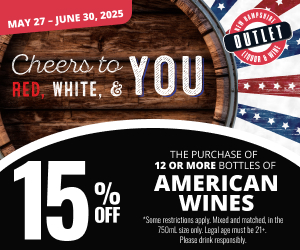Many of us use the word “Champagne” ubiquitously to describe all sparkling wine. Fact: All Champagne is sparkling wine, but not all sparkling wine is Champagne! To explain, Champagne is a demarcated area within northern France. Only within these borders can a sparkling wine be called Champagne* and only through the rigorous production standards called “méthode champenoise”.
How it is made?
The production of Champagne is a fascinating one that ultimately creates a second fermentation right inside the very bottle you eventually purchase! To get to that point, it takes years of development. Only a handful or so of legal grape types can be used in the production of Champagne and largely, only three: Chardonnay, Pinot Noir, and Pinot Meunier, the latter two being red grapes. Each of these grape types is fermented separately into “still” wine. If making a “cuvée” (French for blend) the fermented still wines are blended into the Champagne “house” style.
Color
The color of any wine – still or sparkling – comes from the “bleeding” of the skins of the grapes and how long the skins are left in contact with the juice. Therefore, if you’re wondering how a Champagne can be clear and mostly colorless when two of the three grape varieties are red, it’s actually quite simple. The skins of the red grapes are not left in contact with the juice while fermenting leaving behind mostly colorless juice!
Aging and bottling
In Champagne, each house decides on the amount of time aged before release but it is always a couple of years or more. Before sealing, the wine sees the addition of a small amount of sugar and yeast to begin a second fermentation inside the bottle. They are then “capped” with a heavy beer-style closure. A second fermentation inside the bottle begins and carbon dioxide is created. The wines are placed in an angled rack with holes large enough to hold the bottle’s neck first and set at a slight angle. The bottles are then turned slightly every day and the angle is raised slightly for up to a year. This process, known as “riddling” ultimately pushes the dead yeast cells to the bottle’s neck through gravity. Once the yeast is all in the neck, the bottle is dipped into a frozen brine solution and the cap is released – (this is called disgorgement) and the frozen yeast is blown out of the top of the bottle. A small amount of finished champagne is added to the bottle to replace the amount lost by disgorgement and then a Champagne cork and cage are added. They are then laid to rest again until ready for labeling and ultimately shipping.
Styles
While there are many styles and some sweetness levels, here are the most popular:
- Brut Cuvee: A dry blend of Chardonnay, Pinot Noir, and Pinot Meunier that is made in the house style.
- Blanc de Blanc: “white of white” made with 100% Chardonnay.
- Blanc de Noir: “White of red” made with 100% Pinot Noir.
- Vintage: a Champagne that was harvested, produced, and bottled all from the same year.
- Tete du Cuvee: Best of the best. Typically made with 100% Chardonnay or Pinot Noir.
In summation
Store your Champagne in a cool, dark place prior to consumption. Chill in the refrigerator for 20 minutes, in a bucket of ice water for about the same or a bit less, or a snowbank if your fridge is full!
Salute!
*In the United States, Korbel has a grandfathered clause that allows their sparkling wines to use the word “Champagne” having produced them as such since the late 1800s.


